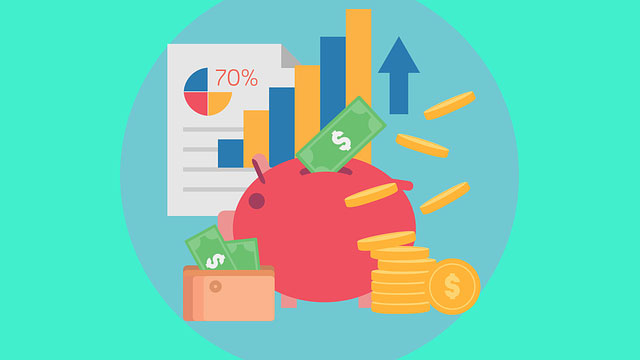The Future of Farming Sustainable Agriculture Solutions
Sustainable agriculture is a crucial component of our future, as we strive to find solutions that address the challenges of feeding a growing global population while minimizing environmental impact. In this article, we will explore various sustainable agriculture practices and innovative solutions that promise to shape the future of farming.
The Importance of Sustainable Agriculture
Sustainable agriculture is essential for maintaining the long-term health and productivity of our planet. Traditional farming methods often rely on intensive chemical inputs, monoculture crops, and excessive water usage, leading to soil degradation, water pollution, and biodiversity loss. Sustainable agriculture aims to minimize these negative impacts by adopting practices that are environmentally friendly, economically viable, and socially responsible.
Technological Advancements in Farming
Precision Agriculture
Precision agriculture utilizes advanced technologies such as GPS, sensors, and data analytics to optimize farming operations. By collecting and analyzing data on soil conditions, weather patterns, and crop growth, farmers can make informed decisions regarding irrigation, fertilization, and pest management. This targeted approach reduces the use of resources and improves crop yields.
Vertical Farming
Vertical farming involves cultivating crops in vertically stacked layers, often in controlled indoor environments. This approach maximizes land use efficiency and enables year-round production. Vertical farms utilize artificial lighting, climate control systems, and hydroponic or aeroponic cultivation methods. They offer the potential to grow crops in urban areas, reducing the need for long-distance transportation.
Hydroponics and Aquaponics
Hydroponics and aquaponics are soilless farming techniques that conserve water and promote efficient nutrient uptake. Hydroponics involves growing plants in nutrient-rich water solutions, while aquaponics combines hydroponics with fish farming. The fish waste provides nutrients for the plants, and the plants filter the water, creating a symbiotic relationship.
Robotics and Automation
Advances in robotics and automation are revolutionizing farming practices. Robotic systems can perform tasks such as planting, harvesting, and weed control with precision and efficiency. These technologies reduce labor costs, improve productivity, and minimize the need for chemical inputs.
Climate-Smart Farming Practices
Crop Diversification
Crop diversification involves growing a variety of crops on the same farm. This practice improves soil health, reduces pest and disease risks, and enhances ecosystem resilience. Diversified cropping systems can also provide farmers with a more stable income by spreading the risk associated with monoculture.
Conservation Agriculture
Conservation agriculture promotes minimal soil disturbance, permanent soil cover, and crop rotation. By reducing soil erosion and improving soil organic matter content, conservation agriculture enhances soil fertility and water retention. This approach contributes to climate change mitigation and adaptation.
Agroforestry
Agroforestry integrates trees with crops or livestock on the same land. Trees provide shade, windbreaks, and nutrient cycling, while also sequestering carbon dioxide from the atmosphere. Agroforestry systems enhance biodiversity, improve soil structure, and offer additional sources of income for farmers.
Water Management Techniques
Efficient water management is vital for sustainable agriculture, especially in regions prone to water scarcity. Techniques such as drip irrigation, rainwater harvesting, and precision watering systems optimize water use and minimize losses. Water-efficient farming practices contribute to water conservation and reduce the strain on freshwater resources.
Sustainable Soil Management
Soil Conservation
Soil conservation practices aim to prevent soil erosion and degradation. Measures like contour plowing, terracing, and windbreaks help maintain soil structure, prevent nutrient runoff, and preserve topsoil. By protecting and nurturing the soil, farmers can sustainably produce healthy crops and safeguard the environment.
Organic Farming
Organic farming eliminates the use of synthetic fertilizers, pesticides, and genetically modified organisms (GMOs). Instead, it relies on natural inputs, crop rotations, and biological pest control methods. Organic farming practices promote soil fertility, biodiversity, and the production of chemical-free food.
Cover Crops and Crop Rotation
Cover crops are grown between main crops to protect the soil from erosion, enhance nutrient cycling, and suppress weeds. Crop rotation involves planting different crops in a specific sequence to break pest and disease cycles, improve soil health, and maintain yields. These practices contribute to sustainable soil management and long-term agricultural productivity.
Efficient Resource Utilization
Water Conservation
Water scarcity is a global concern, and efficient water use in agriculture is crucial. Technologies such as precision irrigation systems, soil moisture sensors, and water-efficient irrigation methods help optimize water application and reduce wastage. Sustainable water management ensures the availability of this vital resource for future generations.
Energy-Efficient Systems
The adoption of energy-efficient systems in farming can significantly reduce greenhouse gas emissions and dependency on fossil fuels. Renewable energy sources such as solar panels, wind turbines, and biogas digesters can power farm operations, reducing carbon footprints. Energy conservation measures, such as efficient machinery and equipment, further contribute to sustainability.
Waste Management
Effective waste management practices minimize the environmental impact of agricultural activities. Composting, anaerobic digestion, and recycling systems can convert agricultural waste into valuable resources, such as organic fertilizers and bioenergy. Proper waste disposal prevents pollution, conserves resources, and promotes a circular economy in agriculture.
Sustainable Livestock Farming
Livestock farming accounts for a significant portion of greenhouse gas emissions and land use. Sustainable livestock practices focus on improving animal welfare, optimizing feed efficiency, and reducing emissions through methane capture and manure management. These practices ensure the long-term viability of animal agriculture while minimizing its environmental footprint.
Enhancing Biodiversity and Ecosystem Services
Pollinator Conservation
Pollinators, such as bees and butterflies, play a crucial role in crop pollination and maintaining biodiversity. Creating habitat corridors, providing nesting sites, and reducing pesticide use are essential for pollinator conservation. Farmers can also integrate flowering plants into their landscapes toattract and support pollinators, ensuring healthy crop yields and preserving ecosystem balance.
Integrated Pest Management
Integrated Pest Management (IPM) is a sustainable approach to pest control that minimizes the use of chemical pesticides. IPM combines various strategies, including biological control, crop rotation, and pest-resistant crop varieties. By integrating multiple pest management techniques, farmers can effectively control pests while reducing environmental risks.
Buffer Zones and Wildlife Corridors
Buffer zones and wildlife corridors are areas of land set aside to protect natural habitats and facilitate wildlife movement. These areas help preserve biodiversity, provide nesting sites for birds, and support beneficial insects. Incorporating buffer zones and wildlife corridors into agricultural landscapes enhances ecosystem services and promotes sustainable farming practices.
Sustainable Fish Farming
Aquaculture, or fish farming, has the potential to meet the increasing demand for seafood while minimizing pressure on wild fish stocks. Sustainable fish farming practices focus on minimizing environmental impacts, improving water quality, and ensuring responsible feed sourcing. Well-managed aquaculture systems can provide a sustainable source of protein and support coastal communities.
Sustainable Farm-to-Table Practices
Local and Organic Food Movement
The local and organic food movement emphasizes the importance of consuming locally sourced, organic produce. Buying from local farmers reduces the carbon footprint associated with long-distance transportation, supports local economies, and ensures fresher and more nutritious food. Organic farming practices align with sustainability goals by avoiding synthetic inputs and prioritizing soil health.
Community-Supported Agriculture (CSA)
Community-Supported Agriculture (CSA) programs connect consumers directly with local farmers. Participants purchase shares or subscriptions and receive regular deliveries of fresh produce throughout the growing season. CSA models promote sustainable farming practices, foster community engagement, and create a sense of food security and transparency.
Food Waste Reduction
Reducing food waste is crucial for achieving a sustainable food system. Farmers can implement measures to minimize post-harvest losses, such as proper storage and handling techniques. Consumers can also play a role by practicing mindful consumption, meal planning, and supporting initiatives that redistribute surplus food to those in need.
Economic Viability of Sustainable Agriculture
Government Support and Incentives
Governments play a vital role in promoting sustainable agriculture by providing support programs and incentives. Financial assistance, grants, and tax incentives encourage farmers to adopt sustainable practices, invest in renewable energy systems, and implement conservation measures. Policy frameworks and regulations also help create a conducive environment for sustainable agriculture to thrive.
Market Demand for Sustainable Products
Consumer demand for sustainable and ethically produced food is growing rapidly. Market trends favor products with eco-labels, fair trade certifications, and organic credentials. Farmers who embrace sustainable practices can tap into these market opportunities, commanding premium prices and gaining a competitive edge.
Cost-Effective Solutions
Sustainable agriculture solutions are increasingly becoming cost-effective alternatives to conventional farming practices. Advancements in technology, economies of scale, and knowledge sharing networks have made sustainable farming more accessible and affordable. By reducing input costs, optimizing resource use, and improving long-term productivity, sustainable agriculture offers economic benefits to farmers.
Closure
The future of farming lies in sustainable agriculture solutions that balance productivity, environmental stewardship, and social responsibility. Technological advancements, climate-smart practices, efficient resource utilization, biodiversity conservation, and sustainable farm-to-table systems are shaping the way we produce food. By adopting these practices and embracing innovation, we can build a resilient and sustainable food system for future generations.









 English (US) ·
English (US) ·